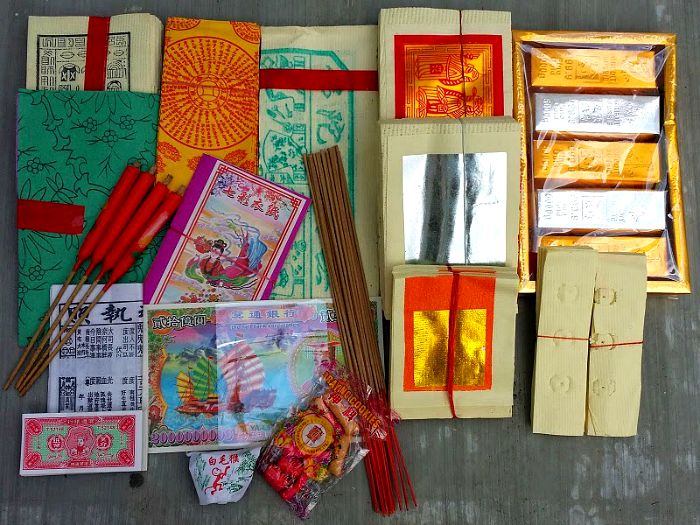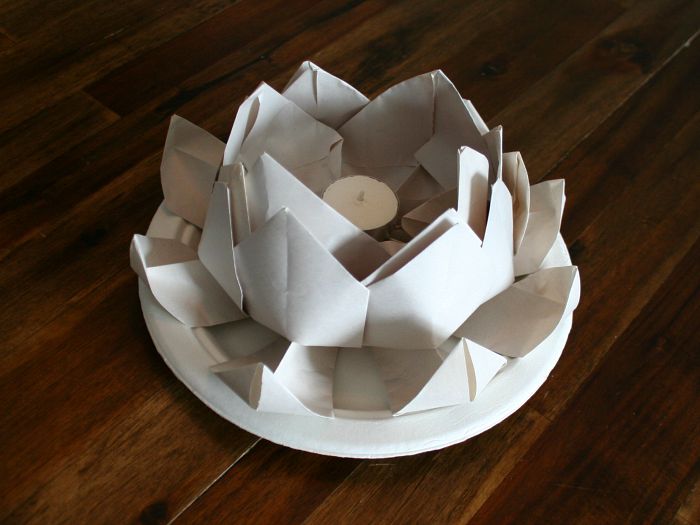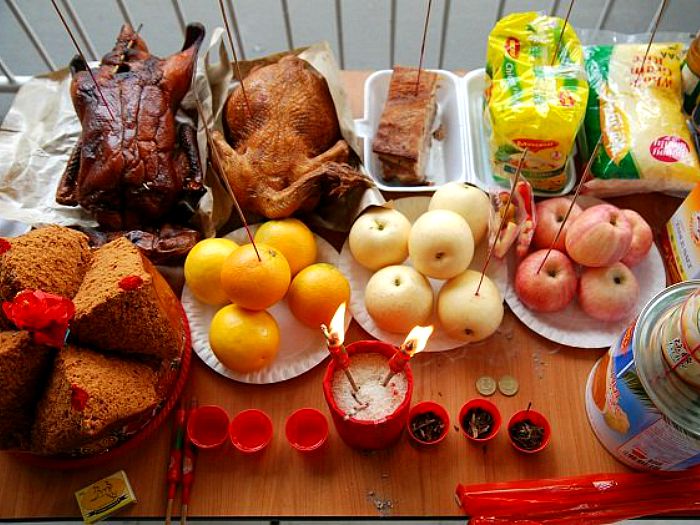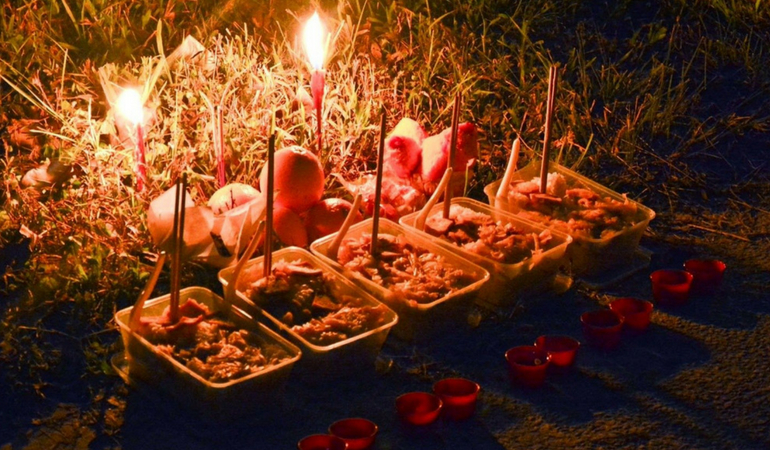This article is part of our Hungry Ghost Festival Family Guide. Sign up for our newsletter to receive our best activity, recipe and craft ideas before every Chinese holiday.
Ghosts and goblins, spooky stories and incense make the Hungry Ghost Festival a lot of fun to celebrate with your kids. It’s a special time to reinforce the importance of family and to share with children the need to care for the destitute and those less fortunate in the world.
Celebrating the Hungry Ghost Festival is all about looking after wandering souls. The Chinese believe that hungry, discontented spirits wander the the world during the seventh lunar month. These are ghosts without families to care for them or people who died because of unfortunate events like murder or suicide. With the number of disaffected people in the living world today, this theme should resonate with kids.
During Ghost Month, families do everything they can to placate these unhappy spirits with gifts of food, money and other supplies. Though primarily intended to prevent these ghosts from causing trouble in own lives, the customs of Ghost Month do raise a certain mindfulness about making space in our worlds for those who have fallen out of society.
Ghost Month culminates with the Hungry Ghost Festival on the evening of the 15th day of the seventh lunar month, when it’s believed that the worlds of the living and dead are most closely linked. Planning the Hungry Ghost Festival celebration is a bit like putting together a party for a set of invisible guests.
There are two parts to the night: a) a family dinner that’s shared with the ghosts; and, b) an outdoor ceremony during which offerings are made for any ghosts passing by. During the course of Ghost Month, you may also be able to attend an outdoor festival led by the local Chinese community, which will be discussed in detail below, as well.
Here’s a step-by-step guide to planning a perfect family celebration for the Hungry Ghost Festival.

One Week Before
1. Buy your ritual offerings
Joss paper offerings for the Hungry Ghost Festival generally stick to basic provisions and supplies. Currency, gold ingots, simple jewelry, clothing and basic incense are common. Reserve the more elaborate electronics, cars and homes for family holidays like the Qingming Festival.
2. Check your calendar for a community festival
The Hungry Ghost Festival is celebrated throughout the month by various Chinese neighborhoods, family associations and trade groups. These outdoor nighttime festivals are typically grand affairs with makeshift stages for Chinese opera performances and other entertainment (just leave the front row empty!), lots of food and drink, and ceremonies performed by Buddhist and Taoist monks. If you live in China, or near a large Chinese community in cities like San Francisco or Singapore, there’s a good chance you’ll find one of these festivals nearby during Ghost Month.

Two Days Before
3. Make or buy a floating lantern
It’s traditional on the evening of the Hungry Ghost Festival or on the last night of Ghost Month to send the wandering spirits home by floating a paper lantern down a river. These days, you can buy your floating lanterns from Amazon, but you’ll have a lot more fun if you use my Floating Lotus Flower Paper Lantern tutorial to make your own instead.
4. Fold your joss paper
If you buy a pack of basic joss paper currency, it’s common practice to fold the sheets into the shape of the simple gold ingots used in ancient China. It’s a fun activity the entire family can enjoy together and you can use my tutorial about How to Fold Joss Paper Ingots to get started.

Hungry Ghost Festival Day
5. Prepare your family dinner
Like many traditional Chinese holidays, the Hungry Ghost Festival includes a family dinner. In this case, however, the focus is less on the symbolism of the food and more about nourishing ancestors and household gods before heading outside to feed the passing spirits (ghosts are never invited inside, for good reason). Focus on simple foods like roast meats or vegetarian dishes to reflect the holiday’s Buddhist ties, and remember to set an extra place or two at the table for the departed. Eat, drink and be merry — happy noise keeps ghosts away!
6. Perform your outdoor appeasement ceremony
After dinner is finished and once night has fallen, head outside with your offerings for the passing spirits. Setting a up makeshift altar at the curbside is common, just make sure you’ve moved away from your home. In addition to your joss paper offerings, it’s traditional to arrange plates of foods like uncooked rice, peanuts, raw noodles, unpeeled fruit and uncut meats for the ghosts. Small cups of tea and rice wine are the beverages of choice. Lighting the joss paper and incense completes the ritual, at which point you can head to the water to release your paper lanterns, if you’ve chosen not to wait until the end of Ghost Month.
Your turn! Can you share any memories from your family’s Hungry Ghost Festival celebrations? Want to ask a question before you celebrate this year? I’d love to hear from you in the comments section below!
HT: Photo by Makansutra, Basis of Singaporean Spirit and Foundily.





Jessica
I noticed in the first photo of this article there are many different kinds of paper I was hoping you could explain to me the different meaning to each of these pieces of paper for example; in the photo all the way to the right at the bottom there are strips of paper stacked that have three holes going from top to bottom with cut out half circles on each side for each hole what’s the purpose of this? Please help me I can’t find anything online and I really want to learn!
Thank you for your time,
Jessica
Wes Radez
Hi Jessica, I could definitely write a longer piece on this! To answer your specific question, the strips of paper are a form of bamboo paper money. Because bad spirits are believed to prefer traveling in straight lines, papers with tiny holes are scattered along the way to the cemetery, so that the spirits have to pass through each hole before pursuing the living and the dead. For more on the other common types of joss paper, you may want to check out this other article, How to Buy Joss Paper. ~Wes
Angeline
Hello wes. In burning joss sticks, is there a correct number of sticks that I should offer? Like even or odd number of sticks only, or any number of sticks would be fine?
Wes Radez
Hi Angeline, thanks for your question. I’m happy for anyone to jump in and correct me if this is wrong, but from what I understand the explanation in this article is accurate: http://www.incensetravel.com/2017/5/how-many-incense-stick-should-we-burn. ~Wes
RIZALDY R CASTRONUEVO
Do we eat the food that we offered after offering it to the hungry ghost? What should we do after offering it?
Wes Radez
Thanks for your question, Rizaldy. There’s the issue of practicality here. After a brief offering ceremony, I’ve seen families eat the food, leaving perhaps a plate behind for passing ghosts. In the case the food is left out overnight, then it’s discarded in the morning. ~Wes
Jamie
Hi I would like to know which day should I burn joss paper? Other than 1st, 15th and last day, is there any other day I need to take note of?
Wes Radez
Hi Jamie, you’d have to consult a Chinese almanac for the day-to-day nitty gritty. The practice varies by community around the world. ~Wes
K
Are those incense sticks poked on the food? Is it safe to use incense sticks on food?
Wes Radez
Thanks for your question, K. The food pictured looks to be a part of a roadside offering. I’d want to keep ash off any food you were planning to eat yourself. ~Wes
Kula
Hi! Im from Philippines and Im a Filipino with Chinese bloodline and Im kinda new with Zhong Yuan Jie because Im adapted more on Filipino tradition but Id like to offer something for my great grandfather which is Chinese. Is it ok to offer food, tea and joss sticks without the hell money or joss paper?
Wes Radez
Yes, Kula. Many folks do exactly that. ~Wes